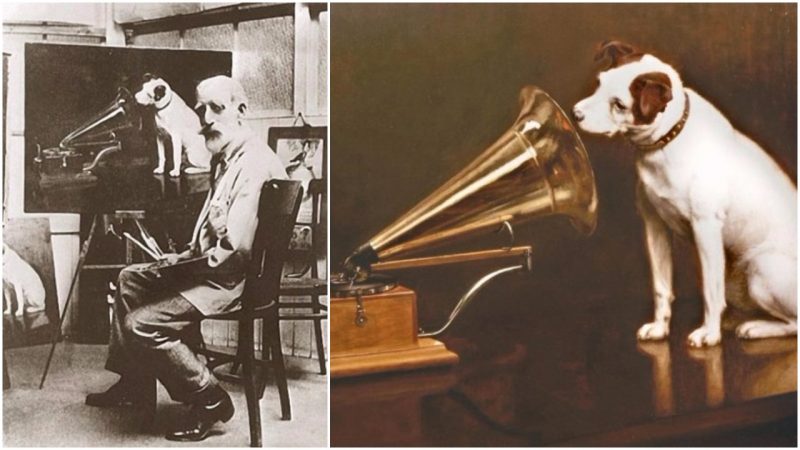One of the most famous late 19th and early 20th-century advertising icons was, apparently, a Jack Russell terrier, the very same one who was a model for a painting called “His Master’s Voice.”
The image was the foundation of the logo for many gramophone and recording brands like HMV, EMI, RCA, Victor Talking Machine Company, and more. The curious dog which looks and listens to the gramophone goes by the name of Nipper.
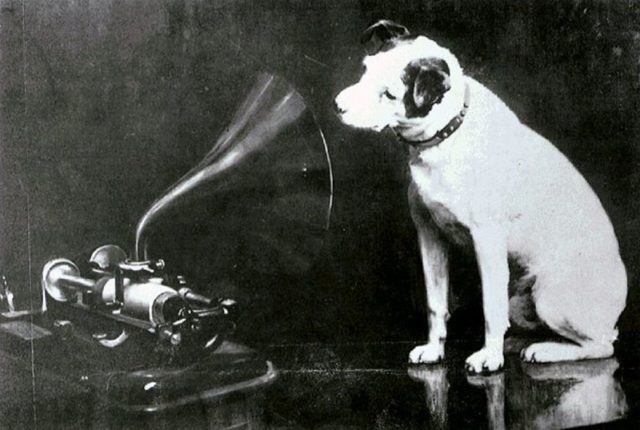
Nipper (1884–1895) was born in Bristol, England, and was a mixed-breed Jack Russell Terrier. The playful dog’s tendency to bite the backs of visitors legs earned him the name.
The Jack Russell Terrier died from natural causes and was buried in Clarence Street, Kingston, near the Thames. His grave is in a small park full of magnolia trees.
When Nipper’s first master, scenery designer Mark Henry Barraud, died penniless in Bristol in 1887, Mark’s younger brothers, Francis and Phillip Barraud, took care of Nipper in Liverpool. The aspiring painter, Francis, sparked the hilarious idea of painting Nipper on canvas, depicting him absolutely confounded and wondering how the sounds could be coming out of the unusual object.
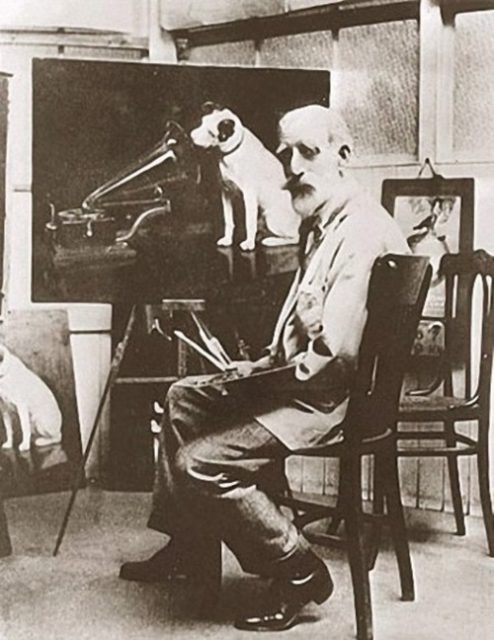
“It certainly was the happiest thought I ever had,” says Francis, commenting on how entertaining it was to watch Nipper stare and listen to the phonograph. The scene was, no doubt, inscribed in Barraud’s mind that even three years after Nipper’s death, he was determined to paint the little dog on canvas.
After he had finished the painting on 11th February 1898, which honored Nipper’s natural curiosity, Barraud thought to himself that maybe the Edison-Bell phonograph company would find his work useful. Sadly, the company turned down Barraud’s offer, skeptically stating “Dogs don’t listen to phonographs.”
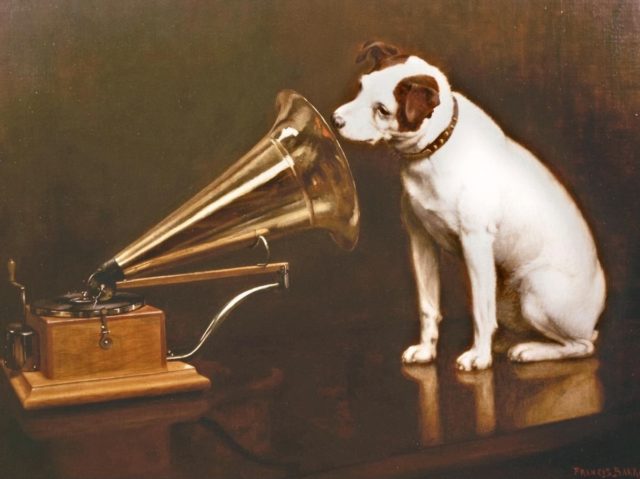
Barraud named the painting “Dog looking at and listening to a Phonograph,” and eventually he decided to rename it to “His Master’s Voice.” At one point, he tried his luck exhibiting it at the Royal Academy, but without success. “No one would know what the dog was doing,” complained many advertising companies and clients.
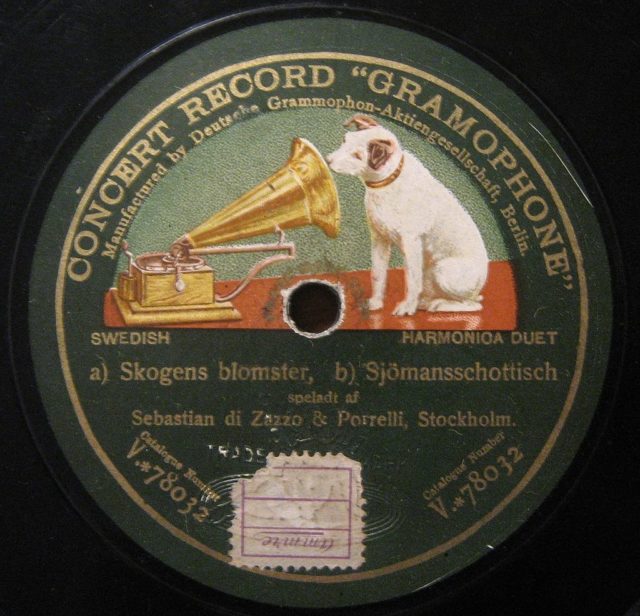
Finally, on May 31st, 1899, luck smiled upon Barraud. When he went to borrow a brass horn to replace the black one on the painting from the Maiden Lane offices of The Gramophone Company, a manager of the company, Barry Owen, suggested replacing the phonograph with a Berliner disc gramophone, and then the company would buy the painting.
The painting would become a highly successful trademark of the Victor, HMV, and its many branch companies, as a registered trademark on July 10th, 1900.
For many years, the original oil painting was in Hayes, Middlesex, on a wall in the EMI boardroom.
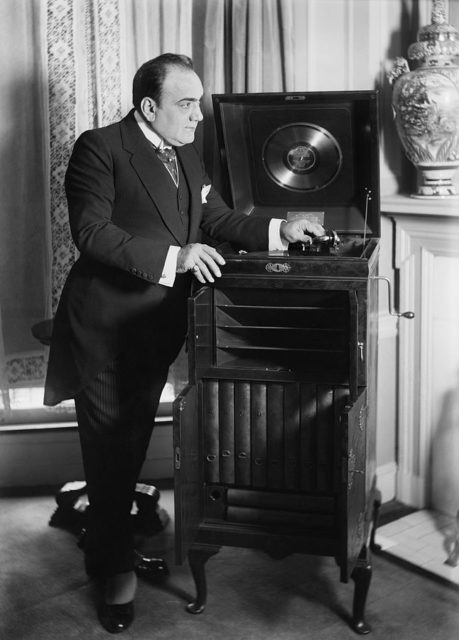
The slogan “His Master’s Voice,” along with the painting, were sold to The Gramophone Company for 100 pounds; 50 pounds for the slogan, and 50 pounds for the painting itself.
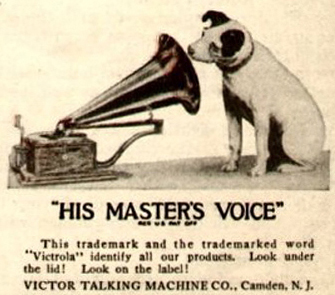
“It is difficult to say how the idea came to me beyond the fact that it suddenly occurred to me that to have my dog listening to the phonograph, with an intelligent and rather puzzled expression, and call it ‘His Master’s Voice’ would make an excellent subject,” stated Barraud.
The painting’s first advertising debut was in January 1900, on the Gramophone Company’s advertising literature. However, “His Master’s Voice” did not feature on the Company’s British letter headings until 1907. The painting and title were finally registered as a trademark in 1910.
Oddly enough, there have been slight mishaps and revoking requests which led to the brand’s label as null and void. Emile Berliner, the highly successful inventor of the gramophone, asked permission of the slogan’s copyright from Barry Owen, the man who accepted Barraud’s request.
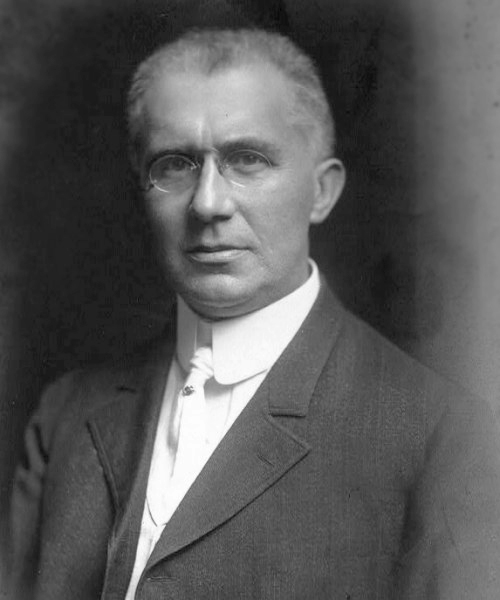
EMI paid the price of the careless legal handling and lost the trademark’s rights. Eighty years later, with the grand arrival of the CD, which forced the companies to start central manufacturing throughout the world, EMI Classics gained the position as the main “heir” to the “His Master’s Voice” slogan.
Today, the “His Master’s Voice” trademark is only used by EMI as a marketing brand for HMV Shops. Nevertheless, it is still recognized by many and remains in the Top 10 of “Famous Brands of the 20th Century”.
As for Nipper, although he was definitely not a purebred, he never hesitated to take on another dog in a fight. With undying vigor and enthusiasm, he loved chasing mice and pheasants in the local park. Nipper Alley, a road near Nipper’s final resting place in Kingston, was named in his honor on 10th March 2010 to commemorate his ever-curious look of wonder.
